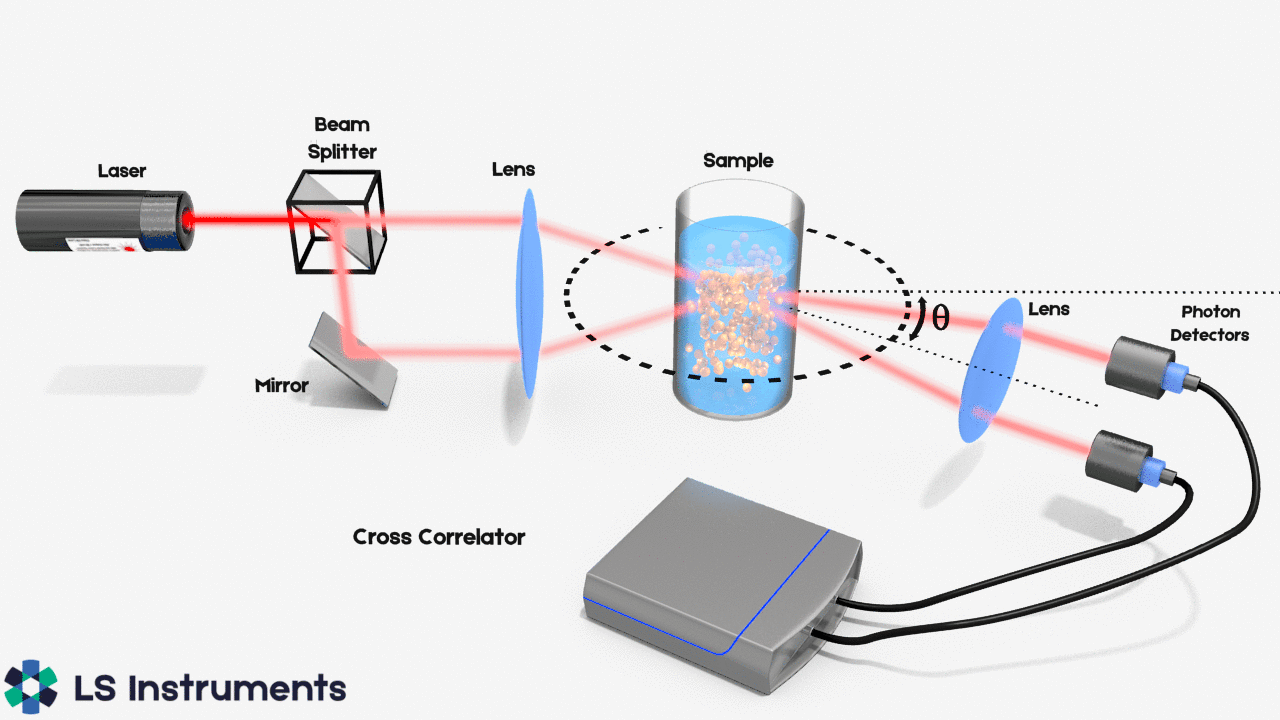3D Cross-Correlation
A major drawback of conventional static and dynamic light scattering is its restriction to transparent samples since these technologies both require the measurement and analysis of singly-scattered light only. Multiple scattering typical for turbid or opaque samples strongly influences the outcome of the measurement and leads to results that can be wrong by orders of magnitude. Because this can happen even with slightly turbid samples, artifacts are obtained quite frequently and often remain unnoticed. 3D cross-correlation is a powerful technique to suppress multiple scattering.
 |
 |
|
With higher particle concentration, multiple scattering increases. The sample appears opaque. Since DLS is based on the assumption that only single scattering is present, this results in an undetectable error. |
The 3D cross-correlation technology uses two Laser beams that cross each other within the sample. It fully suppresses multiple scattering. |
This technique uses two simultaneous light scattering experiments performed at the same scattering vector on the same sample volume. In this manner, the single scattering contribution will be identical in both experiments, but the multiple scattering contribution will be different! The correlation of both experiments with each other results in a cross-correlation function, which contains only the single scattering contribution. Therefore the 3D cross-correlation technique represents an extension of the classical techniques of light scattering that suppresses the multiple scattering that otherwise causes an undetectable, but a significant error of the measured particle size.

The 3D cross-correlation technique also allows one to perform static light scattering experiments on strongly scattering samples by correcting the total measured scattered intensity by the angle-dependent single scattering contribution. The LS Spectrometer is the only instrument that features the 3D cross-correlation technology in a goniometer setup thus allowing correction of dynamic and static light scattering at all scattering angles. This makes it the most powerful and versatile goniometer light scattering system currently available for DLS and SLS.
The 3D cross-correlation technique can be further enhanced with the modulated 3D technique.
